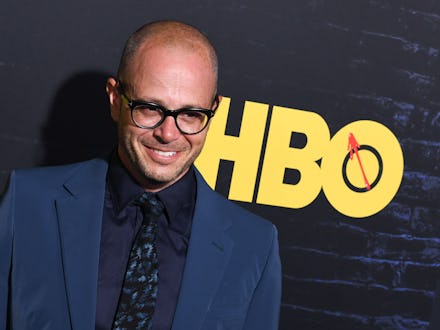'Watchmen' showrunner Damon Lindelof admits he's still learning about race in America

When the highly anticipated first episode of Watchmen premiered, some viewers were shocked to learn that the violent opening scene was based on true events: the 1921 Tulsa Massacre, which claimed the lives of an estimated 100 Black Americans, and displaced thousands of others, in what is considered to be the most violent racial attack in modern American history. According to Damon Lindelof, Watchmen’s head writer and showrunner, this was his intention and bourne from his own experiences in the most diverse writer’s room he’s ever been in.
In an interview with Gen Mag, Lindelof shared how being one of only four white men in a room of 12 writers taught him “some hard truths.”
“I got to a point where the stories I told were just about middle-aged white men and women having existential spiritual crises,” Lindelof said. The 2019 version of the Watchmen centers around race, which is different from the source material by Alan Moore and Dave Gibbons, that centers around the cold war. Lindelof said he had an awakening of sorts after he read Ta-Nehisi Coates’ “The Case For Reparations” “I had an emotionally profound shift,” Lindelof said. “I knew all this was happening. But to have the story so personalized in the context of Coates’s writing was moving.”
It may be surprising to hear that a middle-aged person who grew up in the United States wouldn’t know about the centuries-long abuse black people have endured in this country but, as evidenced by how many people thought that the Tulsa massacre in the opening scene was a fictional event, there’s a clear information gap. Lindelof felt obligated to tackle the topic with Watchmen, and chose to set the series in the second-largest city in Oklahoma.
“I could no longer deny that our country is completely and totally divided by race,” Lindelof said. “This seemed to be the new Cold War and there is a reckoning that should be happening. As a white man and a beneficiary of this system, do I approach this with guilt and shame or can I approach it from a vantage point of service?”
Lindelof seemed to be aware of the limitations in his ability to tell a story about race in America and was intentional about what the outcomes of telling about the destruction of Black Wall Street could be. “Once we committed to doing Black Wall Street as an origin story, questions popped up like, “Is that irresponsible? Is that exploitative? Is that insensitive?” And the answer was: all of the above,” Lindelof told Gen Mag. “But it can also be other things too.”
It meant learning some lessons, especially in the writer’s room in a somewhat uncomfortable way. “I really wanted diversity… as long as everyone listened to me. I don’t think I realized that going in, but I came to realize it very fast,” Lindelof said. “Once it was pointed out to me, I realized that I’m going to have to build consensus around ideas, versus enforcing my will upon them. I shouldn’t be commended for that, but it was incredibly eye-opening.”
So far, the efforts of Lindelof and his writer’s room has proven to be a metric success. According to IndieWire, the first episode of the nine-part series had the highest opening episode views since the 2016 premiere of Westworld. He now believes that it is a creator’s responsibility to make art that interacts with the real world.
“Shouldn’t we be making movies and television shows and books that create these sorts of conversations instead of making puffy nothingness that goes down easy?” asked Lindelof.